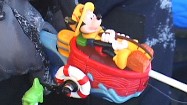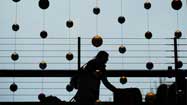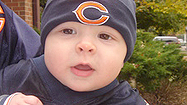There were many tales of heartbreaking loss ... and some remarkable tales of survival. Some people were saved not by technologically advanced early detection systems, but by simple observation and even reliance on folk wisdom.
Tilly Smith, a 10-year-old vacationing with her parents and sister on Thailand's Phuket Island, noticed that the sea was swelling and frothy on the morning of Dec. 26. The schoolgirl from Surrey, England, had learned two weeks earlier in a geography lesson that those were signs of an impending tsunami. She warned her parents, who alerted other vacationers on Maikhao Beach and the beach was safely evacuated. Though the island was hit hard, no one who had been on the beach that day was killed or seriously injured.
All but seven of the 83,000 people who lived on Simeulue, an Indonesian island, were spared from the tsunami because islanders recognized the same signs and fled to higher ground.
The United Nations decided in 2005 to set up a tsunami warning system covering the Indian Ocean. The system, a sophisticated network of seismographs designed to collect data and feed it into analysis centers, has been running since 2006. But the tsunami survival stories convinced disaster-prevention experts that ancient wisdom also remains important in protecting people from the ravages of natural disaster.
The Wall Street Journal recently reported that the United Nations has asked anthropologists across Asia and the Pacific to collect and record the kind of indigenous knowledge that was key to the Simeulue islanders' survival. That type of knowledge also helps residents of the Philippines' Batanes Islands to ride out the 15 typhoons they endure in a typical year. Villagers in northwest India construct earthquake-resistant homes with simple, timber-framed masonry -- a technique considered to be archaic and unsophisticated, but a life-saver there.
Such knowledge will become even more important as more of the world's poor cluster in mega-cities. The United Nations estimates that 3.9 billion people will live in urban areas of developing countries by 2015. The poorest of those people, living in shanties in cities that lack basic infrastructure, will be most vulnerable to natural disasters. Preserving and passing on knowledge such as how to build safer homes and how to anticipate dangerous weather could save millions of lives.
"We don't have to replace everything with computers and satellites," Jerry Velasquez, a regional coordinator for the United Nations disaster reduction programs in the Asia-Pacific region, told the Journal. "We can also look back into the past."
What an interesting notion. Technology can take us so far, but local detection and survival strategies learned over centuries can be true lifesavers.





 Digg
Digg Twitter
Twitter Facebook
Facebook StumbleUpon
StumbleUpon














